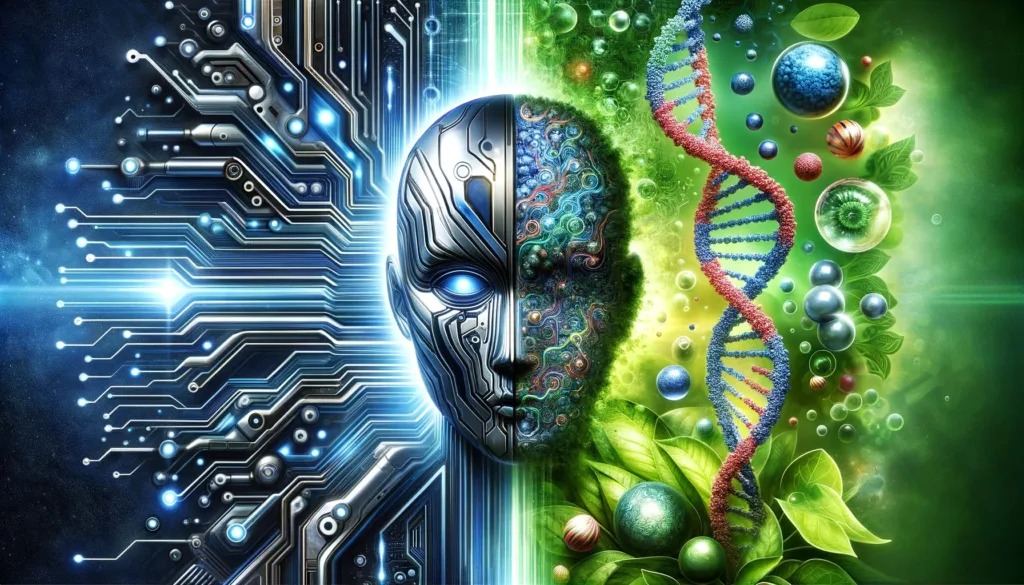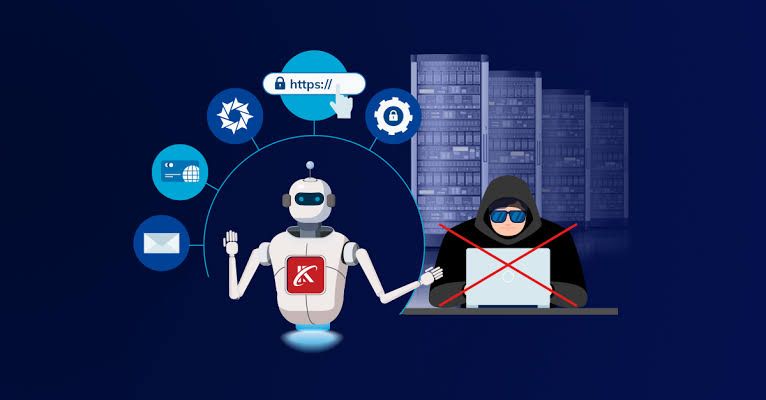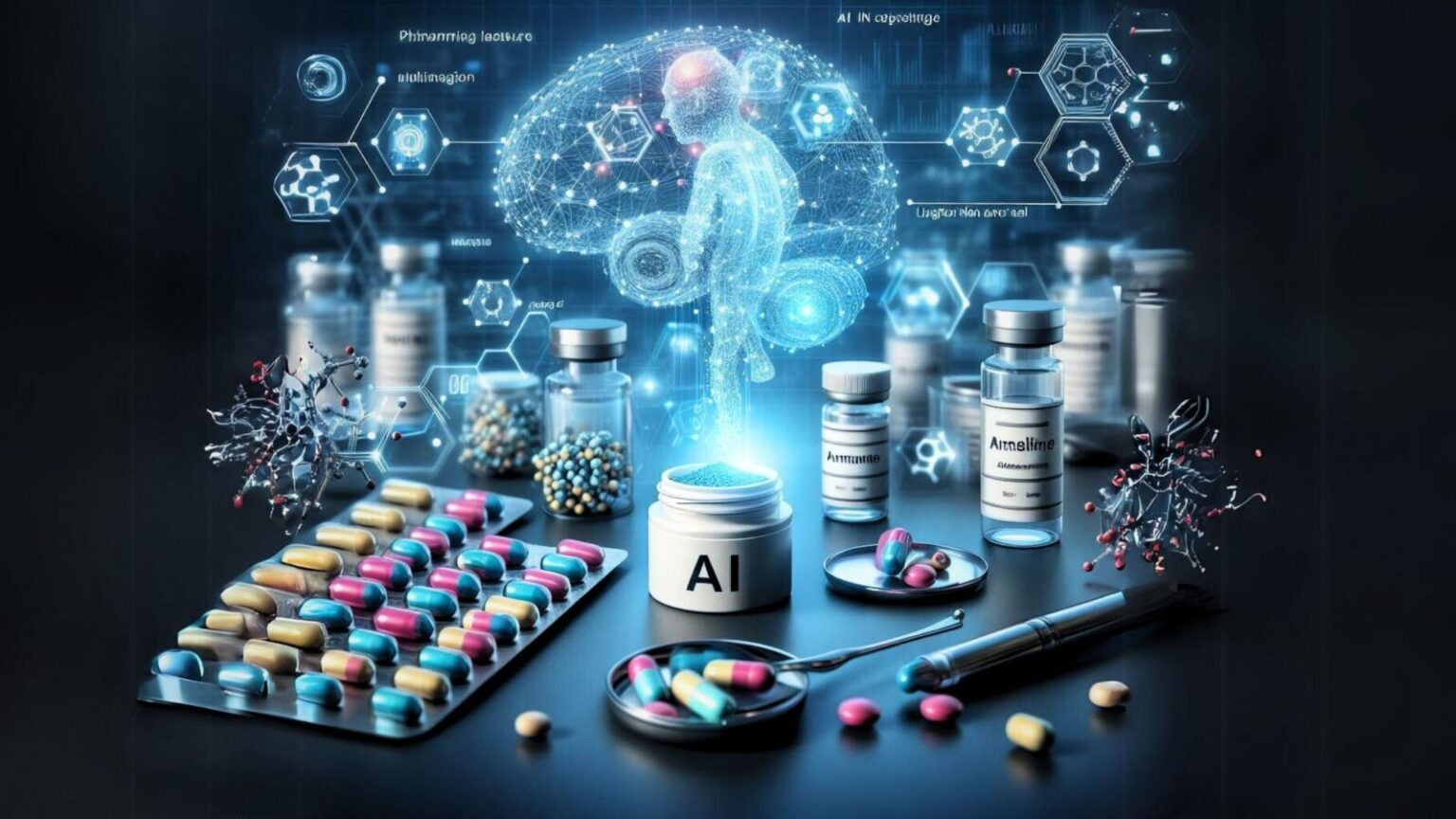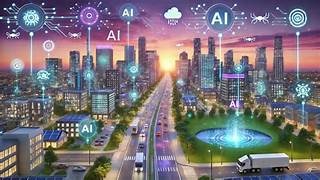
Synthetic biology meets computing: programming cells, living sensors.
Synthetic biology is merging with computing to create programmable cells and living sensors that can detect, process, and respond to environmental signals. By treating DNA as code and cells as computers, scientists are designing systems for healthcare, environmental monitoring, agriculture, and industry, transforming diagnostics, therapeutics, and biotechnology while raising ethical, safety, and governance challenges for the future.
✨ Raghav Jain

Introduction
The 21st century is witnessing a profound revolution at the intersection of biology and computing. Synthetic biology—a field that designs and constructs new biological parts, systems, and organisms—has merged with computational thinking to create “programmable cells.” Just as computers can be coded to execute functions, cells are now being reprogrammed to act as living sensors, capable of detecting pathogens, pollutants, toxins, and even changes in human physiology. These engineered cells can then respond in specific, predictable ways, such as producing a visible color, releasing a therapeutic molecule, or transmitting signals to monitoring devices.
The convergence of synthetic biology and computing holds immense potential. It promises new diagnostic tools for healthcare, biosensors for environmental protection, and bioengineered organisms for sustainable industries. However, as with all transformative technologies, it also raises crucial questions about ethics, safety, and control.
This article explores the foundations of synthetic biology, the concept of programming cells, how living sensors function, real-world applications, ongoing research, future possibilities, and the challenges that must be addressed before this field achieves widespread adoption.
Synthetic Biology and the Programming of Life
Synthetic biology builds upon genetic engineering but takes it several steps further. While traditional genetic engineering involves inserting or modifying specific genes, synthetic biology treats DNA as a programmable language. Just as a computer programmer uses binary code to control machines, synthetic biologists use the four-letter DNA code (A, T, C, G) to program cells.
At the heart of this approach is the idea of modularity. DNA sequences, often referred to as “biological parts” or “BioBricks,” can be assembled like electronic components. For instance, a gene promoter acts like an “on switch,” while a coding sequence instructs the cell to produce a particular protein. By combining these elements, scientists design biological circuits that control cellular behavior.
Advancements such as CRISPR gene-editing tools, DNA synthesis, and computational modeling have accelerated this process, allowing researchers to design, test, and iterate on biological systems with increasing precision. Importantly, computational algorithms are now being applied to predict how synthetic genetic circuits will behave, reducing trial-and-error experiments.
Computing Principles in Synthetic Biology
The fusion of computing with biology is not metaphorical—it is literal. Researchers design biological circuits using logic gates, the same fundamental components of digital computing.
- Biological Logic Gates: Just like AND, OR, and NOT gates in electronics, cells can be programmed to perform logical operations. For example, a cell might produce a fluorescent protein (output) only if two environmental signals are present (inputs).
- Memory and Storage: Cells can be engineered to “remember” past events by altering their DNA in response to certain stimuli. This biological memory can later be read out, much like a data log.
- Feedback and Control Systems: Borrowing from control theory, scientists design feedback loops that allow cells to self-regulate their responses, preventing runaway effects or instability.
- Parallel Processing: Unlike silicon-based computers, living systems naturally perform massive parallel processing. Millions of cells in a culture can simultaneously execute computations, making them ideal for tasks like sensing complex environments.
This blending of biological and computational design is creating a new paradigm often called biocomputing—cells functioning as living computers.
Living Sensors: Cells That Detect and Respond
The concept of living sensors takes synthetic biology from theory to practice. A living sensor is an engineered organism—often bacteria, yeast, or mammalian cells—designed to detect a specific input and generate an observable output.
How Living Sensors Work:
- Input Detection: Cells are engineered with receptors that detect environmental signals, such as toxins, pathogens, or chemical markers.
- Signal Processing: The input activates synthetic genetic circuits inside the cell, which use computing logic to decide on the appropriate response.
- Output Response: The cell produces a measurable signal—such as glowing, changing color, secreting a compound, or triggering an electronic device.
Examples of Living Sensors:
- Biosensors for Pollution: Bacteria engineered to glow when exposed to arsenic in groundwater, providing cheap water testing methods.
- Medical Diagnostics: Gut microbes designed to detect intestinal bleeding by sensing heme molecules, then producing a detectable marker in feces.
- Smart Wound Dressings: Engineered bacteria embedded in dressings that change color when a wound becomes infected.
- Wearable Biotech: Living tattoos where cells in hydrogel patches sense glucose or toxins and signal through color changes.
Such innovations blur the boundary between diagnostics and therapeutics, as some living sensors can also deliver treatments once they detect a problem.
Real-World Applications and Emerging Technologies
1. Healthcare and Personalized Medicine
- Living cells could monitor metabolic changes inside the human body, providing real-time health data.
- Engineered probiotics might sense early signs of colon cancer or inflammation and release therapeutic molecules.
- Living implants could act as early-warning systems for organ rejection or infection in transplant patients.
2. Environmental Monitoring
- Microbes engineered to sense oil spills, heavy metals, or endocrine-disrupting chemicals in water systems.
- Soil bacteria acting as indicators of nutrient depletion or contamination, helping farmers manage crops sustainably.
- Biosensors detecting climate-related stress factors, such as excess carbon dioxide or methane leaks.
3. Industrial and Agricultural Biotechnology
- Fermentation microbes that detect toxic byproducts and shut down production before contamination spreads.
- Engineered yeast that monitors and adjusts conditions in biofuel production facilities.
- Crops engineered with microbial partners that sense drought stress and trigger protective responses.
4. National Security and Biodefense
- Biosensors capable of detecting biological warfare agents or toxins at extremely low concentrations.
- Living systems used in airports or public places for continuous pathogen monitoring.
Challenges and Ethical Considerations
While the promise of synthetic biology and living sensors is vast, there are significant hurdles:
- Biosafety Risks – Engineered organisms, if released into the wild, may behave unpredictably. Containment strategies such as “kill switches” and synthetic amino acid dependencies are being developed.
- Ethical Concerns – Programming life raises profound philosophical questions about the extent of human control over nature.
- Data Security – Living sensors that interface with digital networks may pose cybersecurity risks if hacked.
- Regulatory Frameworks – Existing laws often lag behind technological advances, leading to uncertainty in approval processes.
- Public Perception – Concerns about “GMOs” may limit acceptance, even when applications have clear public health benefits.
The Future of Programmable Cells
The future may witness a seamless integration of biological sensors with digital devices, creating bio-digital hybrids. Imagine a smartphone app linked to microbes in your gut, providing continuous health updates. Or cities where environmental microbes monitor pollution and automatically adjust air-cleaning systems.
Advances in machine learning and AI will enhance the predictive design of genetic circuits, making cell programming more efficient. At the same time, DNA-based data storage and living computation may one day supplement or even rival silicon computing.
However, the long-term success of this field depends on balancing innovation with responsibility. International cooperation, transparent governance, and ethical frameworks will be key to ensuring these technologies serve humanity safely.
Synthetic biology, one of the most transformative scientific fields of the 21st century, is increasingly converging with the world of computing to create something previously unimaginable: programmable cells that function like living computers and act as sensors capable of monitoring, detecting, and even responding to changes in their environment. At its core, synthetic biology treats life itself as a programmable system, where DNA is the code, genes are the instructions, and cells are the machines executing those instructions. Just as computer programmers write code to control software, scientists now write genetic code to control cellular behavior. The tools enabling this revolution—CRISPR-Cas9 gene editing, automated DNA synthesis, computational modeling, and machine learning algorithms—have made it possible to design biological systems with an unprecedented level of precision and predictability. What makes this convergence so groundbreaking is that it allows the principles of computation—logic, memory, processing, input, and output—to be embedded directly within living systems. Biological logic gates work just like electronic ones: an engineered cell can glow only if two chemicals are present (an AND gate), or turn off a function when one molecule appears (a NOT gate). Cells can even be given memory, “remembering” an event such as exposure to a toxin by altering their DNA in ways that can later be detected. Unlike silicon-based processors that operate sequentially, living systems excel at parallel processing, with millions of cells performing computations simultaneously and adapting dynamically to environmental changes. This makes them ideal candidates for tasks such as sensing complex biochemical environments where traditional sensors struggle. Living sensors operate by detecting an input—like a pollutant, pathogen, or disease marker—processing that input through synthetic genetic circuits, and producing an output, which could be a visible signal like fluorescence, secretion of a therapeutic molecule, or activation of an electronic device. Real-world examples are already here: bacteria engineered to glow in the presence of arsenic are being used as inexpensive water quality tests; synthetic probiotics are under development to detect intestinal bleeding by sensing heme molecules in the gut and then producing a detectable marker in stool samples; smart wound dressings embed engineered bacteria that change color when infections arise, alerting patients and doctors before the infection becomes dangerous; and wearable “living tattoos” use engineered cells in flexible hydrogels that change color depending on glucose levels or toxin exposure, effectively turning the skin into a bio-diagnostic interface. The applications extend far beyond healthcare into environmental monitoring, agriculture, industry, and national security. Microbes have been engineered to detect oil spills, heavy metals, and endocrine disruptors in water systems, offering cheaper and more adaptive alternatives to expensive electronic sensors. Soil microbes are being developed to monitor nutrient depletion and alert farmers about the exact fertilizer needs of crops, enabling precision agriculture and reducing environmental damage. In industrial biotechnology, engineered yeast strains can sense toxic byproducts in fermentation systems and automatically adjust their metabolism or shut down harmful processes, improving yield and safety in biofuel or pharmaceutical production. In national security, living biosensors are being investigated as tools for biodefense, capable of detecting pathogens or chemical warfare agents in extremely low concentrations, potentially providing real-time surveillance in airports or public spaces. The fusion of synthetic biology and computing promises a new kind of cyber-biological hybrid system, where living organisms interface directly with digital devices to transmit data. Imagine a future where your gut microbiome communicates with your smartphone to warn you of early-stage disease, or where microbes engineered into city infrastructure constantly monitor air quality and automatically adjust purification systems. Such possibilities are no longer confined to science fiction; they are being actively researched in laboratories worldwide. However, this revolutionary field does not come without challenges and ethical dilemmas. Biosafety remains a central concern: what happens if engineered organisms escape into the wild and mutate in unforeseen ways? To mitigate this, scientists are developing “kill switches” that force engineered organisms to self-destruct outside controlled environments, as well as synthetic amino acid dependencies that prevent them from surviving without laboratory-supplied nutrients. Ethical debates are equally pressing—if life can be programmed like a computer, what are the limits of human control over nature, and how do we prevent misuse? The integration of living sensors with digital systems also raises cybersecurity questions: could malicious actors “hack” living devices to alter their function? Moreover, regulatory frameworks lag behind scientific advances, with many governments struggling to establish clear guidelines for approval, deployment, and monitoring of synthetic biology technologies. Public perception is another hurdle; just as genetically modified organisms (GMOs) have faced resistance, engineered living sensors may meet skepticism despite clear benefits in healthcare and environmental protection. The future of programmable cells, however, looks both inevitable and transformative. Advances in artificial intelligence and machine learning are making genetic circuit design more accurate, reducing the trial-and-error once inherent in synthetic biology. DNA-based data storage is being explored as a medium far more compact than silicon chips, and living computation could one day rival or complement traditional electronics. The most likely future scenario is not one where living sensors replace electronic sensors, but one where hybrid systems combine the strengths of both—electronics providing speed, reliability, and precision, while living cells contribute adaptability, sustainability, and the ability to detect complex biological signals. In healthcare, this could mean continuous monitoring systems where engineered microbes sense disease markers and trigger digital alerts, while in environmental science, it might involve microbial biosensors embedded in smart infrastructure that communicate directly with urban networks. The merging of synthetic biology with computing represents not just a technological advancement but a paradigm shift in how we view life and technology: no longer separate domains but interwoven systems. The key to harnessing this potential will be responsible innovation, guided by international cooperation, transparent governance, and ethical foresight. If developed carefully, living sensors may soon become as common as electronic sensors today, revolutionizing medicine, environmental sustainability, and industry, while challenging us to rethink the very nature of what it means to compute, sense, and live.
Synthetic biology, a revolutionary field at the intersection of biology and engineering, is rapidly merging with computing to create programmable cells and living sensors, transforming our understanding of life and technology by allowing scientists to write genetic code in the same way software engineers write programs, where DNA sequences act as instructions, genes function as executable commands, and cells perform complex operations in response to environmental cues, a process made possible through advanced tools such as CRISPR-Cas9 gene editing, automated DNA synthesis, computational modeling, and machine learning algorithms that predict cellular behavior, enabling researchers to design biological circuits capable of logic processing, memory storage, and adaptive feedback, effectively turning cells into living computers that can process inputs, execute computations, and produce outputs such as fluorescence, therapeutic molecule release, or electronic signaling, with these programmable cells functioning through biological logic gates analogous to electronic ones—for example, an AND gate in a cell produces a response only when multiple chemical signals are present, while a NOT gate inhibits activity when a particular signal is detected—and these cells can even record past events in their DNA, providing a form of biological memory that can later be read to understand cellular exposure history, offering an unprecedented level of control and parallel processing that far surpasses traditional silicon-based systems because millions of cells can compute simultaneously and adapt to dynamic environments, making them ideal for applications where conventional sensors fail, particularly in complex biochemical or living systems; the practical applications of living sensors are already emerging across healthcare, environmental monitoring, agriculture, industry, and security, with engineered bacteria that glow in the presence of arsenic providing low-cost water testing solutions, gut microbes designed to detect intestinal bleeding through heme sensing generating detectable markers in stool samples for early disease diagnosis, smart wound dressings embedding engineered bacteria that signal infection via color changes, and wearable “living tattoos” that monitor glucose levels or detect toxins in real-time, demonstrating how programmable cells can merge diagnostics with therapeutic intervention, while in environmental monitoring, microbes are being engineered to detect oil spills, heavy metals, and endocrine-disrupting chemicals in water systems, offering cost-effective, adaptive, and continuous surveillance, soil bacteria serve as bioindicators to guide precision agriculture by signaling nutrient depletion or crop stress, and industrial applications include engineered yeast or microbial consortia that monitor toxic byproducts in fermentation, self-regulate metabolism, or halt production to improve yields in biofuel, pharmaceutical, or chemical industries, whereas in national security, living sensors can detect minute concentrations of pathogens or biotoxins, providing early-warning systems in public spaces and critical infrastructure; this convergence of biology and computing is further enhanced by cyber-biological hybrid systems, where living sensors interface with digital devices to transmit data, such as gut microbiome microbes that communicate health status to smartphones or urban microbes monitoring pollution levels and interacting with smart city infrastructure, promising a future of integrated living-digital systems; however, the rapid advancement of synthetic biology and biocomputing is accompanied by significant ethical, safety, and governance challenges, including biosafety concerns where engineered organisms could escape containment and mutate unpredictably, mitigated through kill switches, synthetic amino acid dependencies, and strict laboratory protocols, ethical debates regarding the extent of human control over life and the implications of programming living organisms, cybersecurity risks where malicious actors could potentially alter or hijack living sensors, gaps in regulatory frameworks that lag behind technological capabilities, and public perception challenges reminiscent of GMO skepticism, which could hinder adoption even when societal benefits are clear; despite these obstacles, the potential benefits are transformative, with machine learning and AI enhancing genetic circuit design, reducing trial-and-error experimentation, DNA-based data storage providing dense alternatives to traditional media, and living computation systems potentially supplementing or even rivaling electronic computing in certain applications, particularly where adaptability and environmental integration are key; future scenarios likely involve hybrid systems combining electronic precision with biological adaptability, such as continuous health monitoring where engineered microbes detect early-stage disease and trigger alerts, smart infrastructure using microbial biosensors to optimize environmental conditions, and industrial systems with self-regulating microbial components that enhance efficiency and safety, fundamentally redefining computation, sensing, and interaction with the living world, while emphasizing responsible innovation, international cooperation, transparent governance, and ethical foresight to ensure safe deployment; in conclusion, synthetic biology meeting computing represents a paradigm shift where programmable life and living sensors blur the line between technology and biology, offering revolutionary applications in medicine, environment, industry, and security, but also requiring careful consideration of biosafety, ethics, regulation, and public trust, highlighting a future where living organisms become integrated computing and sensing systems, transforming both science and society, and the Q&A further clarifies these concepts: Q1: What does it mean to program a cell? Ans: Programming a cell means designing genetic circuits that control cellular behavior, enabling cells to respond predictably to specific inputs with defined outputs, much like software code directs a computer. Q2: How are living sensors different from traditional sensors? Ans: Living sensors are biological systems that detect, process, and respond to stimuli, offering self-replication, adaptability, and complex signal detection capabilities that conventional electronic sensors cannot match. Q3: What are some real-world uses of living sensors today? Ans: Examples include arsenic-detecting bacteria, gut microbes sensing intestinal bleeding, smart wound dressings signaling infection, and wearable living tattoos monitoring glucose or toxins. Q4: What are the risks of using engineered cells in the environment? Ans: Risks include unintended ecological impact, mutation, and uncontrolled spread, mitigated through kill switches, containment strategies, and biosafety protocols. Q5: Could living sensors replace electronic sensors completely? Ans: Not entirely; electronics provide speed and precision, while living sensors offer adaptability and complex biochemical sensing, with future systems likely combining both strengths. Q6: What role does computing play in synthetic biology? Ans: Computing provides modeling, design tools, and logic frameworks that enable scientists to predict and program cellular behavior, integrating digital principles like logic gates, memory, and feedback directly into living systems, ultimately creating programmable, adaptive, and intelligent living sensors that bridge biology and technology in unprecedented ways.
Conclusion
The convergence of synthetic biology and computing is reshaping how we view life itself. By treating DNA as a programmable code, scientists are engineering cells as living sensors capable of computation, memory, and communication. These technologies hold transformative potential across healthcare, environmental monitoring, industry, and security.
Yet, as with all powerful innovations, the promise is matched by challenges. Biosafety, ethical debates, data security, and governance structures must be addressed. Ultimately, the marriage of biology and computing could redefine the future of medicine, sustainability, and technology—but only if developed responsibly.
Synthetic biology meets computing is not just a scientific advancement—it is a new way of thinking about life as programmable, adaptable, and intelligent. Living sensors may one day become as common as electronic sensors today, bridging the digital and biological worlds in ways once thought impossible.
Q&A Section
Q1:- What does it mean to “program” a cell?
Ans:- Programming a cell involves designing and inserting genetic circuits (DNA sequences) that control how the cell behaves, much like writing code for a computer. Cells can then respond to inputs (like chemicals or signals) with specific outputs (like glowing, producing a drug, or sending a signal).
Q2:- How are living sensors different from traditional sensors?
Ans:- Traditional sensors are electronic and detect physical or chemical changes. Living sensors, however, are biological systems—cells or microbes—that can sense, process, and respond to stimuli in more complex, adaptive ways. They are self-replicating, self-sustaining, and can operate in environments where electronics fail.
Q3:- What are some real-world uses of living sensors today?
Ans:- Examples include bacteria that glow in the presence of arsenic, gut microbes that detect intestinal bleeding, and smart wound dressings that change color when infected. Research is also exploring living tattoos, probiotic diagnostics, and biosensors for pollution.
Q4:- What are the risks of using engineered cells in the environment?
Ans:- Risks include unintended ecological effects, genetic mutations, and uncontrolled spread of engineered organisms. To address this, scientists use biosafety measures like genetic kill switches and containment protocols.
Q5:- Could living sensors replace electronic sensors completely?
Ans:- Not entirely. Each has strengths—electronics are fast, reliable, and precise, while living sensors excel in adaptability, self-repair, and detecting complex biological signals. In the future, a hybrid system combining both approaches is most likely.
Similar Articles
Find more relatable content in similar Articles

Solar-Powered Wearables: Can T..
Solar-powered wearables are re.. Read More

AI-Powered Hackers: The New Cy..
In 2025, cyber threats have en.. Read More

AI in Drug Discovery: Faster C..
Artificial Intelligence is rev.. Read More

Smart Cities: How Technology I..
Smart cities are transforming .. Read More
Explore Other Categories
Explore many different categories of articles ranging from Gadgets to Security
Smart Devices, Gear & Innovations
Discover in-depth reviews, hands-on experiences, and expert insights on the newest gadgets—from smartphones to smartwatches, headphones, wearables, and everything in between. Stay ahead with the latest in tech gear
Apps That Power Your World
Explore essential mobile and desktop applications across all platforms. From productivity boosters to creative tools, we cover updates, recommendations, and how-tos to make your digital life easier and more efficient.
Tomorrow's Technology, Today's Insights
Dive into the world of emerging technologies, AI breakthroughs, space tech, robotics, and innovations shaping the future. Stay informed on what's next in the evolution of science and technology.
Protecting You in a Digital Age
Learn how to secure your data, protect your privacy, and understand the latest in online threats. We break down complex cybersecurity topics into practical advice for everyday users and professionals alike.
© 2025 Copyrights by rTechnology. All Rights Reserved.